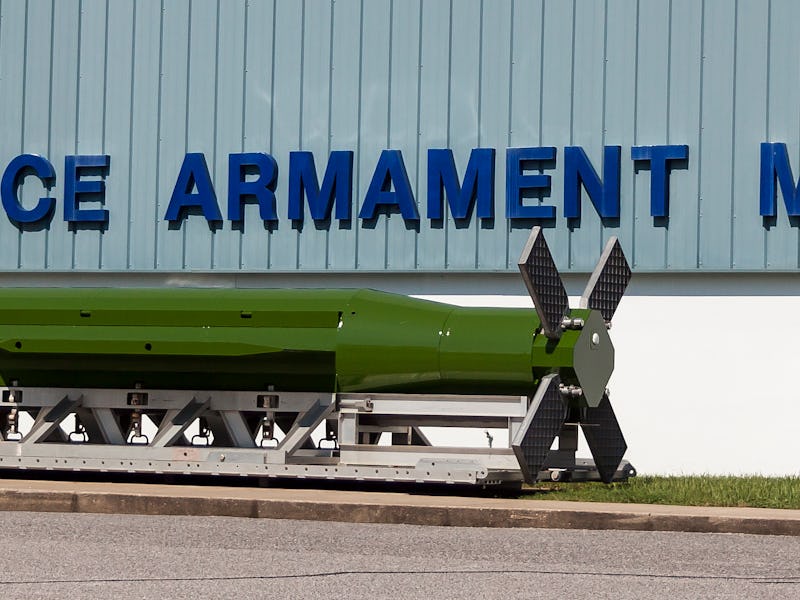What Is GBU-43/B, the Mother of All Bombs?
The U.S. military just used its biggest non-nuclear bomb in combat for the first time.

The United States military dropped a 21,600-pound GBU-43/B bomb, nicknamed MOAB, in Afghanistan at 7:32 p.m. local time on Thursday. The GPS-guided Massive Ordnance Air Blast Bomb — aka the Mother of All Bombs — is the U.S. military’s most powerful non-nuclear bomb.
This is the first recorded instance that a GBU-43/B — which the U.S. military designed in the early 2000s during the Iraq War — has been used in a combat scenario.
“It was dropped in eastern Afghanistan, in Nangarhar province, against a complex of ISIS tunnels, personnel that had been assembling in that area of nangarhar,” reports CNN analyst Barbara Starr on Thursday.
The MOAB works in a similar way to the unguided, 15,000-pound Daisy Cutter bombs employed by the U.S. to clear forested areas during the Vietnam War. It is designed not to penetrate a target, but to explode in the air, causing a high pressure area that crushes soft targets like personnel, as well as collapsing underground tunnels over a large area. How large? The MOAB’s blast radius is one mile, which means it creates an area of devastation two miles across.
“We targeted a system of tunnels and caves that ISIS fighters used to move around freely, making it easier for them to target US military advisors and Afghan forces in the area,” White House Press Secretary Sean Spicer told reporters at a press conference. “The United States took all precautions necessary to prevent civilian casualties and collateral damage as a result of the operation.” With MOAB’s massive blast zone, though, it may be highly probable that there were civilian casualties.
The MOAB, which is 30 feet long, gets its explosive power from 18,700 pounds of an explosive known as H6, which is made of RDX (Cyclonite Cyclotrimethylenetrinitramine), nitrocellulose, TNT, aluminum powder, paraffin wax, and calcium chloride. The bomb is encased in a very thin aluminum skin so as not to interfere with its blast wave. It employs four grid fins — much like the Falcon 9 rocket — to guide it to its targeted area.
The U.S. military has not announced which type of aircraft dropped the bomb Thursday, but we know it’s designed to be dropped out of the back of a C-130 transport aircraft rather than the bomb bay of a traditional bomber, due to the MOAB’s unusual size and weight.
MOAB was first tested on March 11, 2003 in Florida, less than two weeks before the beginning of Operation Iraqi Freedom. It was never deployed during that conflict, but it may have still done its job. Analysts at the time said the reason for designing this bomb was as much psychological as it was functional.
“Besides blowing stuff up, this is designed to shock and awe the Iraqis,” Chris Bolkcom, a military analyst told USA Today in 2003.
With Thursday’s deployment of the GBU-43/B MOAB, it’s clear that the United States is interested in using the bomb as more than just a deterrent.